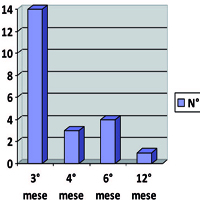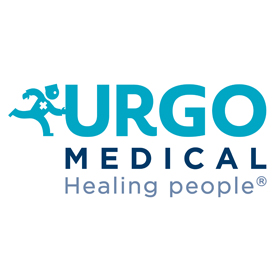Autologous peripheral blood mononuclear cells from selective filtration for treatment of chronic lower limb lesions: Results at 4 years

Submitted: October 13, 2020
Accepted: March 30, 2021
Published: July 30, 2021
Accepted: March 30, 2021
Abstract Views: 340
PDF (Italiano): 206
PDF: 54
Appendix (Italiano): 0
PDF: 54
Appendix (Italiano): 0
Publisher's note
All claims expressed in this article are solely those of the authors and do not necessarily represent those of their affiliated organizations, or those of the publisher, the editors and the reviewers. Any product that may be evaluated in this article or claim that may be made by its manufacturer is not guaranteed or endorsed by the publisher.
All claims expressed in this article are solely those of the authors and do not necessarily represent those of their affiliated organizations, or those of the publisher, the editors and the reviewers. Any product that may be evaluated in this article or claim that may be made by its manufacturer is not guaranteed or endorsed by the publisher.
Similar Articles
- Michela Crisci, Giovanni Lepore, Federica Feleppa, Alessandro Crisci, Fabiana Flagiello, Cytomorphological analysis of liquid platelet-rich fibrin produced with the DUO fixed angle centrifuge (Process, France) for use in the regenerative therapy of skin ulcers , Italian Journal of Wound Care: Vol. 7 No. 3 (2023)
- Laura Dettori, A Descriptive epidemiological study on chronic skin lesions in home care in the districts of Sassari – Alghero – Ozieri , Italian Journal of Wound Care: Vol. 4 No. 2 (2020)
- Elia Ricci, Monica Pittarello, Use of the Lumiheal device in the treatment of contaminated wounds , Italian Journal of Wound Care: Vol. 8 No. 1 (2024)
- Viviana Nebbioso, Giuseppe Nebbioso, Francesco Petrella, Daniele Naviglio, Use of biological products in the healing process of skin lesions , Italian Journal of Wound Care: Vol. 7 No. 1 (2023)
- Chiara Bissoni, Klarida Hoxha, Alessandro Scalise, Pasquale Longobardi, Hyperbaric oxygen therapy and negative pressure wound therapy in the treatment of non-healing wounds , Italian Journal of Wound Care: Vol. 2 No. 3 (2018)
- Elisabetta Sardone, Elena Toma, Learning survey: assessment and management of the patient with wounds , Italian Journal of Wound Care: Vol. 2 No. 1 (2018)
- Giulia Candeloro, Skin tears. A quantitative study on the phenomenon and proposal for a prevention and management procedure , Italian Journal of Wound Care: Vol. 1 No. 1 (2017)
- Marina Pierangeli, Giovanni Ruocco, Vanya Recchi, Valentina Cecconato, Costanza Binci, Yasmine Zavalloni, Davide Talevi, Matteo Torresetti, Giovanni Di Benedetto, Alessandro Scalise, Medical Honey in clinical practice: our experience in 75 treated cases , Italian Journal of Wound Care: Vol. 4 No. 1 (2020)
- Elia Ricci, Monica Pittarello, Clinical evaluation of the efficacy and tolerability of a new device based on of Rigenase® and polyhexanide in the treatment of chronic skin lesions , Italian Journal of Wound Care: Vol. 6 No. 2 (2022)
- Giuseppe Nebbioso, Ciro Falasconi, Viviana Nebbioso, Francesco Petrella, Pain and chronic skin ulcers , Italian Journal of Wound Care: Vol. 4 No. 1 (2020)
You may also start an advanced similarity search for this article.



 https://doi.org/10.4081/ijwc.2021.69
https://doi.org/10.4081/ijwc.2021.69





